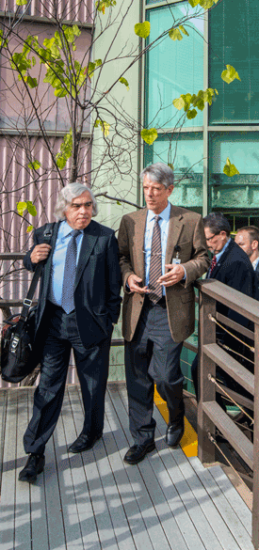Reflecting on 2014, I’d first point to our impressive science (see many highlights on the webpage http://www-als.lbl.gov/index.php/science-highlights/science-highlights.html), and a record number of users and publications: the ALS supported over 2,400 users and we expect to exceed our 2013 record of more than 800 publications. Of course, the past year was also a challenging one for us; together with other national facilities, we had to reduce staff due to reduced government funding. While there is still uncertainty about what the next few years hold for broad government support of science, funding for us this year is now secure and we are well positioned to take advantage of resources as we go forward.

This year is a good time for ALS to both focus on its core strengths and expand partnerships—with other divisions at LBNL, new research programs, other national laboratories, and new funding sources, including foundations. We have an ambitious set of beamline and instrument projects planned for the next few years, and we’ll be able to accomplish our goals with support from those new funding sources.
This year will see the completion of the MAESTRO nano-ARPES beamline, and the COSMIC imaging and scattering project will move forward towards a 2016 completion date. Two new beamlines—AMBER and QERLIN—are in early-stage development and should be completed within the next few years. These projects are key to the future of the ALS in various research areas, including renewable energy sciences and quantum materials. Additional projects include the upgrade of existing beamlines—SAXS-WAXS (together with the Molecular Foundry), small molecule crystallography, spin-ARPES, ambient pressure photoemission (in support of the energy hubs JCAP and JCESR), and scattering in the so-called “tender” x-ray regime (supported by LDRD funds). Beyond that, we’re also working with Howard Hughes Medical Foundation to complete a world-leading micro-focus beamline for structural biology.
In the next few years, we look forward to supporting users with these new capabilities, which will keep us on the cutting edge of science. Also, these projects are consistent with our long-term desire to upgrade the ALS storage ring to fully utilize diffraction-limited or highly coherent x-rays. Together with our community, we’re continuing to examine the opportunities that would be made available with such a brightness upgrade. Also, it is important that instruments we build over the next few years be upgradable for “ALS-U” operations, since we see that as the future for our facility.
Support from Basic Energy Sciences at DOE, together with contributions from our partners, is helping us to operate optimally for users and move forward with our project priorities. We will continue to demonstrate how ALS can increase scientific productivity across a broad spectrum of science and technology, and contribute to the technical and economic vibrancy of the nation.

I am very proud that in the past year we significantly expanded our relationship with the computing divisions at the Lab. As the brightness of our storage ring and the number of ALS instruments has increased over more than 20 years of operation, so have the number of users, experiments, and rate of data generation. Dealing with enormous amounts of data has become increasingly important to the future of the ALS and the Lab as a whole. The Computing Research Division and NERSC computing facility are playing a key role in helping us manage this data, and together we have developed a nationally recognized capability and reputation for rapidly processing huge amounts of data, benefiting users both at the ALS and related facilities.
People at ALS are of course the reason for our success, and I’m pleased to welcome Scott Taylor as safety coordinator and newest member of our ALS family. With Scott’s past experience here at LBNL, and ALS’s Jim Floyd’s promotion to director of the Lab’s EHS Division, we’re well positioned to continue as a model for a great safety culture.
It’s going to be a fun and productive year!